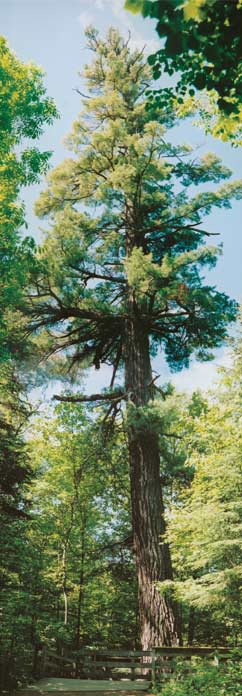WHAT YOU GET:
Seedlings come to you generally in one of three formats – bare root, jelly-rolled or in plugs. Each supplier has its own special way of growing and packing, so ask when you order. Each format has its advantages:
• Bare Root: You get the tree with roots bare rather than in a dirt plug. Usually several in one large plastic bag to reduce drying out. This format enables quite large seedlings and even larger “transplants” to be shipped since you are not also shipping dirt. These seedlings must be stored in a cool, dark place, with a small amount of water added to the bag if stored for more than a few days. Bare root stock has been kept for up to 5 – 6 weeks in a cooler, but I don’t recommend it and they were in rough shape when finally planted. Best to get them in the ground in the first two weeks.
• Jelly-Rolled: Usually somewhat smaller seedlings and root systems, with the roots still in the small dirt plug they grew in. About 15 seedlings are then wrapped (“jelly-rolled”) together in plastic in one bundle. Easy to carry around when hand-planting, easy to store and keep moist. These should also be planted ASAP.
• Plugs (“containerized”): Here the roots’ dirt plug is still in the container in which it grew – often plastic foam blocks with holes for the dirt and many seedlings per “container”. Often the smallest sized seedlings, but also very economical. Easy to ship, often a refund for returned containers. Since the seedlings are still “planted” in the container, they can actually be put outdoors in the sun, kept watered and thus stored for much longer than the two formats above. Simply pluck the seedling out of the container when ready and plant right away. Don’t let the plugs dry out at all. Caution – available moisture is still the biggest key to seedling success, so planting in July or August and not watering or getting help from the rain gods means few such seedlings will survive.
• “Transplants”: Some suppliers, notably the Minnesota DNR “General Andrews Nursery” and some others will grow seedlings for several years, dig them up, transplant them elsewhere, let them grow some more, dig them again and sell them to you. Some can be over three feet long from tree top to root end. Because they have been transplanted once, and are so much larger, their survival rate in the bush is extraordinary. These are my personal favorites, regardless of cost. In Minnesota’s Arrowhead, with little soil and abundant rock, we probably lose only 10% of our transplants. Regular large seedlings might average 30 – 40% mortality, and really small ones can be much higher than that, depending mostly on rain. Rates for other planters on other sites will vary hugely! But I really like transplants! You must use a planting bar and the roots must go in the hole straight down and stay straight down.
HOW TO PLANT SEEDLINGS
The Hole: The ideal time is early to mid-May while the soil is still quite wet. Follow the advice above, avoiding moisture excesses, planting only in mineral soil and “releasing” the area around your chosen tree site with clippers. Each seedling requires a straight-down hole. For smaller seedlings, I have seen people plant with a sharp stick, a garden trowel, a narrow blade garden spade, a shovel and even with a hardwood shovel handle with one end sharpened. Make as small a hole as possible, straight down, deep enough so the whole root package can go in. Trees with dirt plugs go in just to the level of the plug’s top. There must be NO air pocket left around the plug or the tree will die – pack the rest of the hole with dirt somehow (see “planting bars” below). I often step lightly next to the plug to leave a slight “dirt dent” that water can collect in.
Planting Bars: Hard to find but great in getting the job done. Called “dibbles” in some parts of the country. Logging and reforestation firms sometimes carry them – we’ll start looking for a source. You can often borrow one for a week if you tap the right outdoor agency or maintenance department. Planting bars can weigh up to 8# or so and dig through duff and deep into mineral soil, making them the only way to plant numbers of bare root seedlings. Even then some locations require as many as 10 or more bar hits to get the hole big enough and deep enough. Those very long bare roots MUST go straight down – curve them back up and you lose the tree. Place ALL the roots in the hole until they will just be buried by incoming dirt. Make sure they haven’t dried out at all. Many people then make a second hole with the bar just a few inches from the first and lean the bar sideways toward the seedling now in the hole. If it works, the bar pushes dirt sideways and completely fills the tree hole so no air pockets survive. We tend toward repacking the hole by hand (which means someone sitting on the ground) and feel that the extra TLC is certainly noted by the seedlings. Who knows? Dare I say again – water is the key? If at all possible, water new seedlings regularly and often and for as long into the summer as you can stand it. During the “exceptional drought” conditions in the Arrowhead the last two summers we used garden sprinklers to water everything we could reach (even the older seedlings) and saved almost everything. Seemed silly at the time but it worked.


